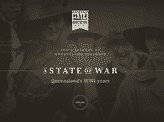Introduction
A company logo should be easy to associate with the industry, brand, and target audience. It should be a graphic expression of what a certain business entity is representing, as well as what consumers expect to receive. This is why designing a logo takes a lot of talent, hard work, and just the proper amount of inspiration to blend all those aspects into a single piece of graphic content.
Our current article will focus on the writing industry and what it takes to produce an amazing logo for a company invested in writing.
Source: https://www.pexels.com/photo/drawing-feedback-logos-critique-17845/
Specify logo style
Talk to your client about the style of the logo you are most interested in. It’s fair to expect that some of your clients will have no idea about different style options and how each of those could benefit their needs, so feel free to introduce them to some of the most favorable options like vintage style, minimalistic, flat, or whichever you feel would be most suitable.
Currently, western culture favors the minimalistic approach, which is the consequence of eco-friendly, resource-saving movements throughout various industries. However, if your client is focusing on a different market, you might consider going with more abstract design styles. Speaking, it’s not the same if you’re working for the Australian or Indonesian market because the two consumer groups are different in many ways.
Business details
An essential part of a logo design process is knowing all the details regarding the client’s business. This includes their industry, target audience, product line, company culture, as well as some key competitors to secure a unique design. It’s not the same if your client is offering to write an essay for college students or short stories for kids. These simple details will help you choose the right elements and style to represent your client to the full extent.
Target audience is also important to keep in mind because different cultures expect different color palettes, versatile design styles, typesetting, and symbolism. Therefore, make sure to get every bit of information regarding your client’s business, and sink all that data into your design process.
Color choice
Make sure to go over your client’s website and understand which color palette is dominating. This could be of great help when you’re working on the logo color choice because it’s of vital importance to help the audience connect that particular logo with the company website. After all, both the logo and the web page are components of a business’s visual identity.
Symbolic elements
Since we’re talking about a small writing business logo, it’s not difficult to imagine which symbols could be used as part of the logo design. Anything from pens, to open book, a quill, or a hint of Gutenberg’s printing press would be a valid solution. However, this depends on what your client is trying to convey through their company logo.
Still, a powerful symbolism or the use of metaphoric representations could show a certain class or raise interest for the brand if you play your cards well enough.
Typeface setting
Choosing a proper font for a logo allows the audience to connect with the brand, but it also allows you to point out that which you think should grab the attention of the observer. However, it’s also important to keep in mind the industry-specific fonts that are mostly in use.
For example, certain typesetting choices are more common in the writing industry than they are for software development. So if you want to attract consumers interested in essay writing, you won’t use Terminator font which is more related to the tech industry.
Test your mockups
Get a few mockups ready and send them over to some of your friends or create a focus group to examine the provided solutions. Make sure that your audience is compatible with the target audience your client is looking to attract.
Still, the final verdict should come from your client, so make sure you show them more than one option to choose from.
Conclusion
These were some of the most important aspects of the design process you should keep in mind when working on a logo for a writing company. Remember that you should gather as much information and understand your client before you start building their visual identity. Also, don’t forget that not all companies have the needs even if they are within the same industry, so mind the details.
Author Bio:
Emma Rundle is a content writer dedicated to digital marketing and college lifestyle. She writes each post using authority resources that add practical value to each information. As a writer, Emma looks for new ways to improve the life of her audience.












